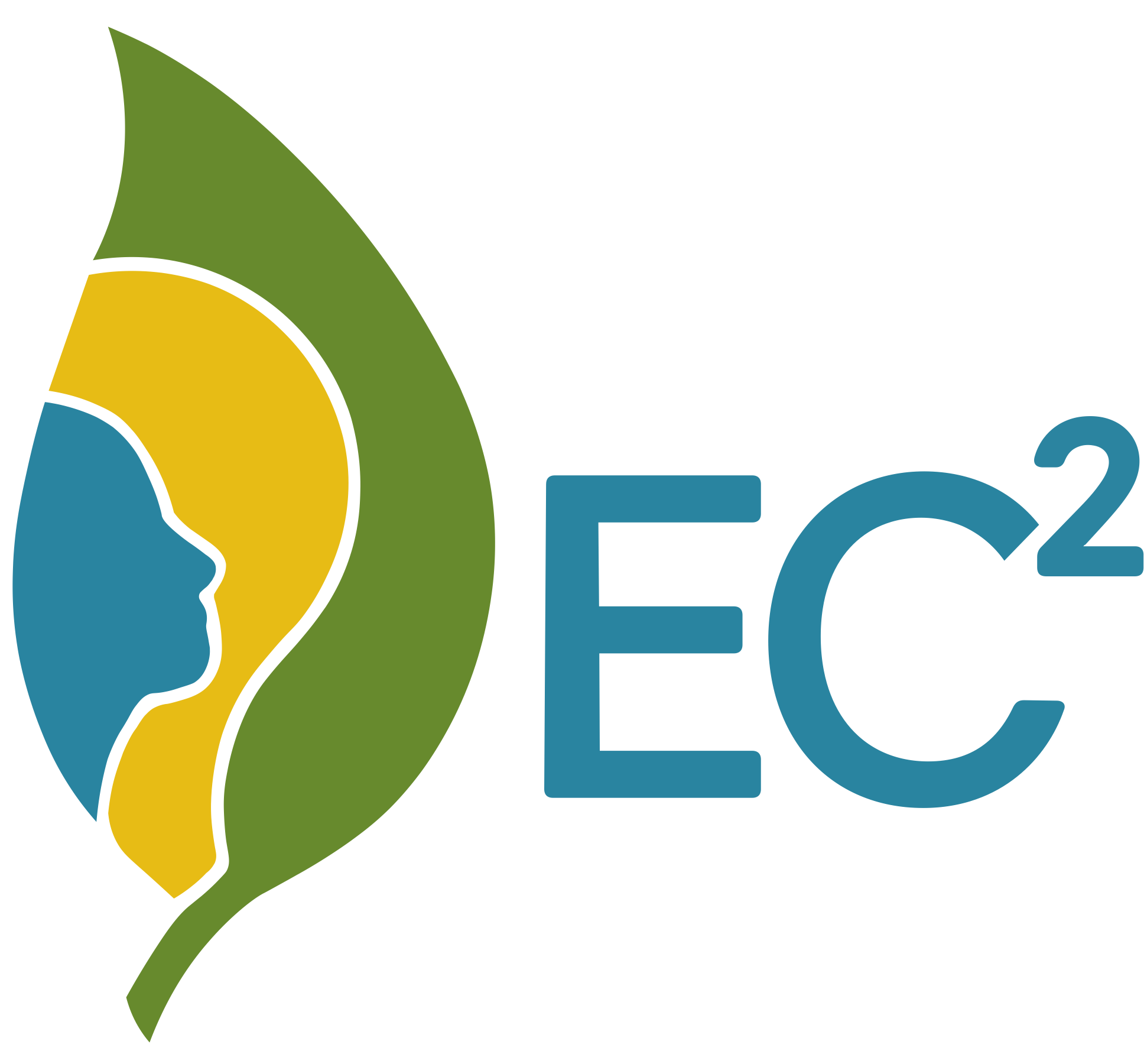Driving factors and citizen personas towards the further growth and diffusion of Collective Energy Initiatives in Europe by 2030
Introduction
As Europe transitions to a sustainable energy system, achieving climate neutrality by 2050 hinges on the rise of collaborative energy citizenship. The ENCLUDE “Band Together” storyline highlights the collective actions that energy citizens are poised to undertake- such as forming energy communities, ecovillages, and other Collective Energy Initiatives (CEIs). These grassroot movements are driving localized green energy production and maximizing resource efficiency, with their numbers steadily growing in recent years. To accelerate this progress, we analyzed and mapped out pathways for expanding CEIs, with the goal of better understanding and supporting their growth and influence. Our aim was to decode the mechanisms and motivations driving the establishment and spread of these innovative structures, helping them translate, replicate, and scale to a wider audience. To apply and test our approach, we selected three (3) CEIs that differ in lifespan, population, and location:
“Cloughjordan Ecovillage” in Ireland,
“EnergieC Midden-Delfland” in The Netherlands,
“Belica Energy Community” in North Macedonia.
To model diffusion processes, the grAssroot iNnovation dIffusion MOdel (ANIMO) was designed and developed in the context of ENCLUDE and applied to the real-life case studies above. ANIMO delves into how envisaged social innovations are adopted by, and disseminated among, a network of individuals, with diverse socioeconomic, behavioral, and lifestyle profiles. In this particular application, the model is employed to simulate the further growth and diffusion of the 3 CEIs under study.
Within the “Band Together” storyline, the modeling analysis provided valuable insights into the motivations driving residents to participate in CEIs. Additionally, the model examined the influence of social, cultural, and demographic factors on the expansion of these initiatives.
Building on these insights, the analysis also projected the potential decarbonization impact that the growth of CEIs could have on the broader energy system.
The results of this work reveal ways in which the presented approach can be useful in formulating policies to encourage the development or future growth of CEIs, as it can:
Identify and prioritize high-potential CEIs, optimizing resource allocation: By pinpointing which CEIs are most likely to succeed, policymakers and stakeholders can strategically allocate resources to maximize impact and ensure sustainable growth.
Enhance citizen participation through optimized interventions and tailored strategies: The model enables the design of targeted engagement and communication strategies, which can increase the likelihood of citizen involvement by addressing specific needs and motivations. Tailored initiatives can further boost participation rates and create more inclusive energy communities.
Demonstrate the CO2 reduction potential of CEIs at the local level: By illustrating the tangible decarbonization effects of CEI expansion, results can motivate citizens to take part in such initiatives and incentivize investors to fund community-driven projects.
Enable proactive infrastructure development: Anticipating the future growth of energy communities and ecovillages allows for informed and timely infrastructure investment decisions. This proactive approach ensures that infrastructure is ready to support expansion, avoiding delays and bottlenecks that could otherwise hinder the growth of CEIs.
More details about the ENCLUDE scenario space and the modelling process can be found in Deliverable 5.3: Report on the decarbonisation impact of energy citizenship at the local level.
Research/ Policy questions
What are potential driving factors that could support the diffusion and further growth of Collective Energy Initiatives in Europe by 2030?
Findings revealed a strong correlation between population density and projected growth of the CEIs under study. Densely populated areas facilitate faster CEI expansion, likely due to the enhanced effect of the “word-of-mouth” phenomenon. This is clearly demonstrated in the case of the “EnergieC Midden-Delfland” energy community, which is the most densely populated area out of the 3 case studies. This trend is further supported when comparing case study results across the “future-world” narratives.
However, another key differentiator impacting growth appears to be the level of interconnectedness within a society, or, in other words, the number of social connections. In essence, closely knit societies, either purely due to size of population or due to the existence of strong social bonds facilitate faster dissemination of information about the benefits of collectivism, leading to higher growth rates.
Interestingly, even in the case of the “Fragmented World” narrative, characterized by limited interaction and skepticism, high population density manages to circulate information about the benefits of CEIs and propagate it throughout the community over time. The graphs further illustrate periods of rapid growth triggered by the cascade effect of influence. As more individuals join the CEI, the information spreads more readily through the social network, accelerating expansion.
This contrasts with the initial stagnant growth phase, where establishing a core group is crucial. Once a core foundation is laid, it facilitates influence on a larger audience, leading to both higher overall growth and a faster growth trajectory. This trend is most prominently emphasized in the Dutch case study and less so in the Irish and the North Macedonian ones.
In conclusion, population density and social connectivity were identified as key drivers of further CEI growth. Remote locations, like the cases of Ireland and even more of North Macedonia, face inherent limitations due to lower population density. The graphs clearly demonstrate the cascade effect of mass participation that is encouraged by dense areas in terms of population such as the one in the Netherlands, highlighting a "ripple effect" that can significantly accelerate adoption of sustainable practices. This phenomenon holds immense potential for achieving the EU’s ambitious decarbonization goals, particularly when combined with targeted policy actions designed to achieve widespread adoption of CEIs.
Focusing on the “Familiar World” narrative, in the case of the "EnergieC Midden-Delfland" energy community, data on CEIs in the Netherlands suggests an anticipated growth rate of approximately 8% based on historical trends. However, this figure serves as a broad approximation, and the projection of the growth percentage in a 5-year time span is based on the assumption of steady compound annual increase.
A crucial limitation of relying solely on such an approach for projections lies mainly in its inability to capture the dynamic nature of energy communities’ diffusion and expansion, which should be
taken into consideration during the design of policy schemes that aim at the support and integration of energy communities into the existing grid.
For example, in a scenario where a rapidly growing community surpasses initial projections for on-site solar power generation, further growth could be met with inability to be realized due to the unpreparedness of the existing infrastructure.
By gauging the potential rate of community growth based on simulations such as this, informed and proactive infrastructure investment decisions are possible. This can prompt policymakers and planners to ensure that the current infrastructure can accommodate the projected increase in population, which, in turn, can save valuable resources and reduce the time until carbon neutrality is achieved.
This forward-thinking approach can be applied not only when grid integration matters but also in other infrastructure issues. This can be somewhat showcased in the Irish case study, in which the feedback we received via direct communication with community members, revealed the critical role of infrastructure planning in enabling growth. While the project demonstrates success in certain sustainability metrics, further expansion has remained stagnant and dependent on resolving limitations within the existing wastewater treatment system.
More specifically, according to project leaders there is currently an embargo on planning permissions in “Cloughjordan Ecovillage” because the local town wastewater treatment plant is at capacity. This has resulted in the number of dwellings and residents in the village remaining static for the last 14 years, pointing to the fact that if the situation remains as is, there will be no further growth.
The case of the “Cloughjordan Ecovillage” is a prime example of how unforeseen hurdles, particularly infrastructure constraints, can impede the progress of otherwise well-designed sustainable community structures. This underlines the importance of collaborative efforts between CEIs, local authorities, and relevant stakeholders combined with a strategic approach to ensure that infrastructure keeps pace with sustainable development plans.
What is the emission reduction (decarbonization) potential related to the further growth of CEIs around Europe?
As expected, the most significant emission reduction (decarbonization) potential is correlated with increased participation in energy communities, highlighting the positive impact of collective expressions of energy citizenship on advancing energy transition endeavors. Having utilized country specific data, these outcomes produce insights not only for the CEIs under study, but also the broader contexts of the countries hosting them.
In this regard, the “EnergieC Midden-Delfland” energy community in the Netherlands showcases the highest capacity for reducing carbon emissions, which also highlights the efficacy of the energy-related Dutch policy framework. On the other hand, “Cloughjordan Ecovillage” in Ireland, while exhibiting substantial promise for decarbonization, local infrastructure constraints stand in the way of further progress, despite its notable contributions to the carbon footprint reduction in the region during past years.
Lastly, the North Macedonian case study showcases the lowest emission reduction (decarbonization) potential compared to the other case studies. This phenomenon, however, is possibly owed less so to the weak regulatory frameworks in place, but rather is attributable to factors such as social cohesion, demographic shifts, and a declining population in the region.
Nonetheless, even in instances where the impact may seem marginal, the efforts of these local initiatives are noteworthy and warrant further encouragement and support. This underscores the importance of operationalizing their activities through targeted research and policy initiatives to maximize their potential in driving sustainable energy transitions and fostering collective energy citizenship practices at the local level.
Citizen personas: what individual motivations are driving the further growth of Collective Energy Initiatives around Europe?
Leveraging ENCLUDE’s questionnaire on members of CEIs, delving into both individual traits and collective aspects of life in the community, we categorized the questions that were asked and through this process we identified four (4) “character attributes”, deemed crucial in the decision- making process of individuals to join a CEI. By processing the survey data on participants’ income, lifestyle, education, etc., these character attributes were quantified and inserted as agent-related parameters into ANIMO for the CEIs under study. The identified character attributes are:
"Environmental Awareness": Captures individuals' knowledge and concern for environmental issues, often motivating them to participate in collective initiatives that address these challenges.
"Energy Independence": Reflects individuals' desire for self-sufficiency and independence from the traditional power grid.
"Sense of Community": Describes the feeling of belonging and connectedness, which strongly influences the willingness to engage in CEIs.
"Financial Concern": Represents individuals' anxiety about their financial well-being, driving them to join CEIs for cost savings while also indicating their risk aversion.
Based on data analysis of real survey results, we then created six (6) personas, outlining different potential citizen profiles with potential motivations driving their decision to join a CEI:
 |
The Green GuardianEnvironmentalists prioritizing sustainability and energy independence. Concerned about traditional energy's impact, they seek to reduce their carbon footprint through on-site renewable energy and reduced grid reliance, aligning with their desire for energy autonomy. |
 |
The Security-Minded ScepticThese individuals are mainly attracted to the financial benefits of an energy community. They value a strong sense of community and trust their neighbors' positive experiences, which can convince them of the financial advantages and encourage adoption. |
 |
The Eco-CollaboratorsCommunity-oriented people that value collective action to address climate change. They are motivated by contributing to a larger environmental movement with like-minded neighbors and appreciate the focus on renewable energy to reduce their environmental impact. |
 |
The Tech TrailblazerExcited about technologically innovative aspects of energy communities, they value smart home integration & increased energy independence. The environmental benefits are a bonus, but their primary interest is in experimenting with and adopting the latest tech. |
 |
The Self-Reliant SaverThese individuals seek self-sufficiency, valuing energy independence and financial savings. They aim to reduce reliance on the traditional grid, generate their own energy, and are motivated by lower energy bills and shared investment opportunities. |
 |
The Eco-Conscious SaverEnvironmentally conscious and financially savvy, these individuals want to reduce their carbon footprint and save money or earn income by joining energy communities. Demonstrating cost savings and other financial benefits related to CEIs can influence their decision. |




